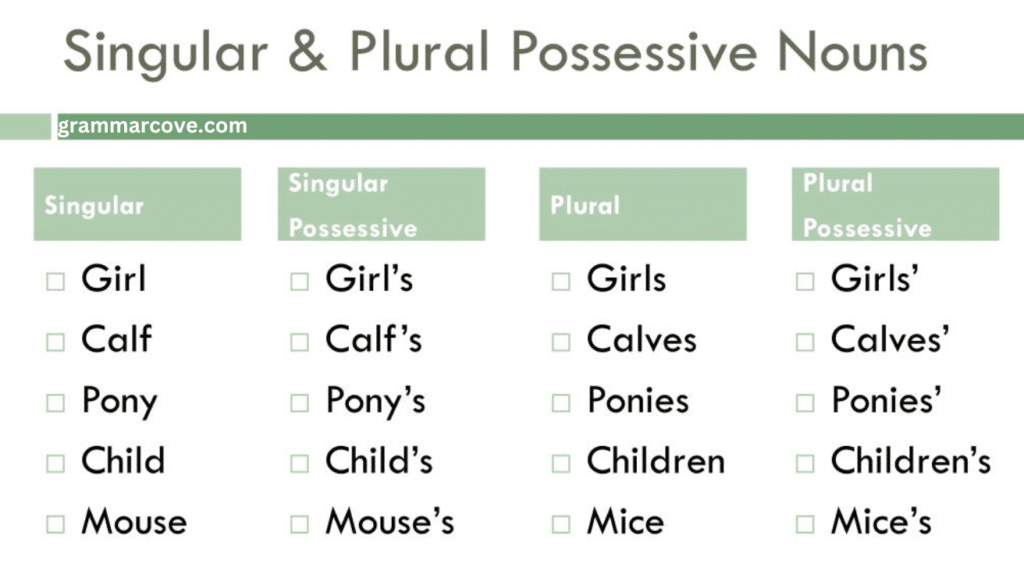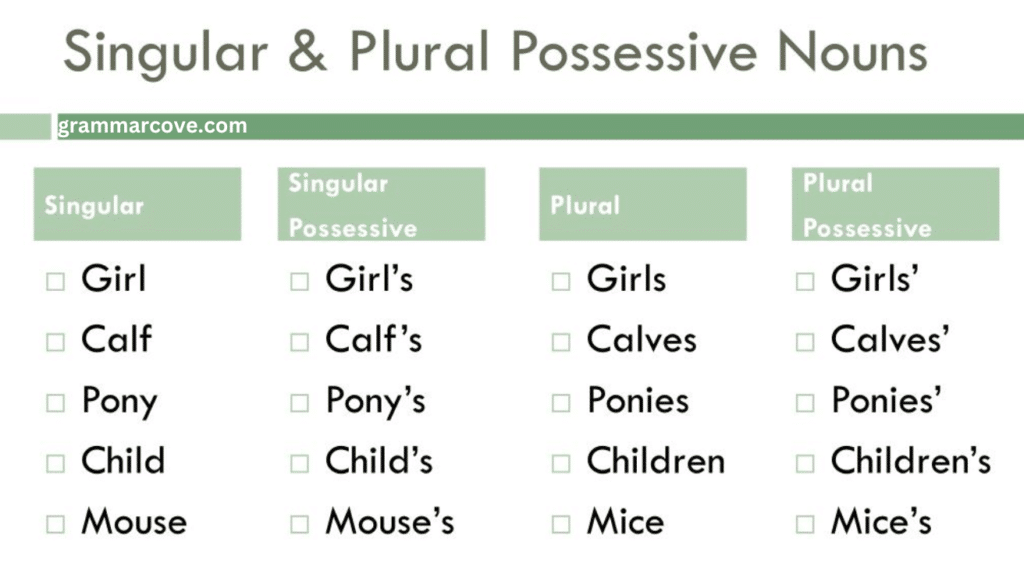The English language can be tricky, especially when it comes to possessives. A common question that arises is whether to use class’ or class’s. Both forms exist, but their usage depends on the context.
In this article, we’ll explore the nuances of possessive forms, provide scenario examples, and discuss how these rules apply in different contexts. Let’s dive in!
Singular Possessive: Class’s

When you want to show ownership by a singular noun, you typically add an apostrophe followed by an “s.” This is true for most singular nouns, including class.
Example Scenarios
- Describing Course Material
- “The class’s syllabus includes various digital marketing trends such as social media marketing and email marketing.”
- Here, we’re indicating that the syllabus belongs to a specific class.
- Discussing Student Performance
- “The class’s average score in the recent exam was impressive, especially given their focus on search engine optimization (SEO).”
- This highlights ownership over the average score related to a particular class.
In both examples, the use of class’s clearly indicates that something belongs to the class.
Plural Form: Classes
When talking about more than one class, the plural form classes comes into play. This form is essential when you’re discussing multiple groups or sections.
Example Scenarios
- Comparing Multiple Classes
- “The classes offered in the digital marketing program include topics like pay-per-click (PPC) advertising and conversion rate optimization.”
- In this case, we’re referring to various classes collectively.
- Evaluating Student Feedback
- “Feedback from the classes indicates a strong preference for hands-on learning experiences related to web analytics.”
- Here, we highlight opinions from multiple classes.
Using classes denotes a broader scope and involves multiple groups.
Plural Possessive: Classes’
To indicate ownership by multiple classes, you would use the plural possessive form classes’. This form helps clarify that something belongs to more than one class.
Example Scenarios
- Coordinating Events
- “The classes’ projects were showcased at the annual fair, featuring strategies on content strategy and influencer marketing.”
- This indicates that the projects belong to all the classes involved.
- Analyzing Trends
- “The classes’ results in the latest survey revealed a significant interest in online advertising.”
- In this instance, we see the results stemming from multiple classes.
Using classes’ effectively shows shared ownership among different groups.
Important Notes on Usage
While many singular nouns follow the standard rule of adding ’s for possessives, there are exceptions. However, class typically adheres to this rule.
Pronunciation Considerations
- Some may argue that class’ sounds more natural in certain contexts, especially when pronounced aloud. While it’s acceptable in informal settings, sticking to class’s in formal writing is advisable.
Clarity is Key
When choosing between class’ and class’s, consider your audience and the formality of your writing. If clarity is your goal, class’s often makes it unmistakably clear that you are referring to a singular class.
Possessives Summary Table
Here’s a quick reference table to help clarify the different possessive forms related to class:
| Form | Usage | Example |
|---|---|---|
| Class’s | Singular possessive | “The class’s project was outstanding.” |
| Classes | Plural form | “Several classes were held this semester.” |
| Classes’ | Plural possessive | “The classes’ presentations impressed everyone.” |
Connecting Possessives to Digital Marketing
Understanding possessive forms can enhance clarity in various fields, including digital marketing. Consider how these terms might apply in a marketing context:
- “The class’s approach to content strategy emphasizes engaging with audiences effectively.”
- “The feedback from the classes’ projects on influencer marketing was overwhelmingly positive.”
By mastering possessives, you can articulate your ideas more clearly, especially in discussions about trends and strategies.
Examples of Possessives in Context
To provide a more thorough understanding, let’s look at examples of possessives in different contexts related to digital marketing.
Singular Possessive in Marketing
- Class’s Strategy
- “The class’s strategy for social media marketing incorporates the latest trends.”
- This showcases ownership over a specific strategy related to a single class.
Plural Possessive in Marketing
- Classes’ Results
- “The classes’ results showed that conversion rate optimization techniques significantly improved engagement.”
- Here, the results belong to multiple classes, indicating collective ownership.
Summing It Up
- Class’s refers to something owned by one class.
- Classes indicates more than one class.
- Classes’ signifies ownership by multiple classes.

Conclusion
Understanding the distinctions between class’s, classes, and classes’ is crucial for effective communication. In the realm of digital marketing, where clarity and precision matter, using the correct possessive forms can enhance your writing significantly.
Whether you’re discussing email marketing strategies or analyzing web analytics, knowing how to correctly use possessives helps convey your message accurately. By keeping these rules in mind, you can navigate the complexities of English possessives with confidence, making your writing clearer and more engaging. So next time you wonder whether to use class’ or class’s, remember the context and the ownership you intend to express!


